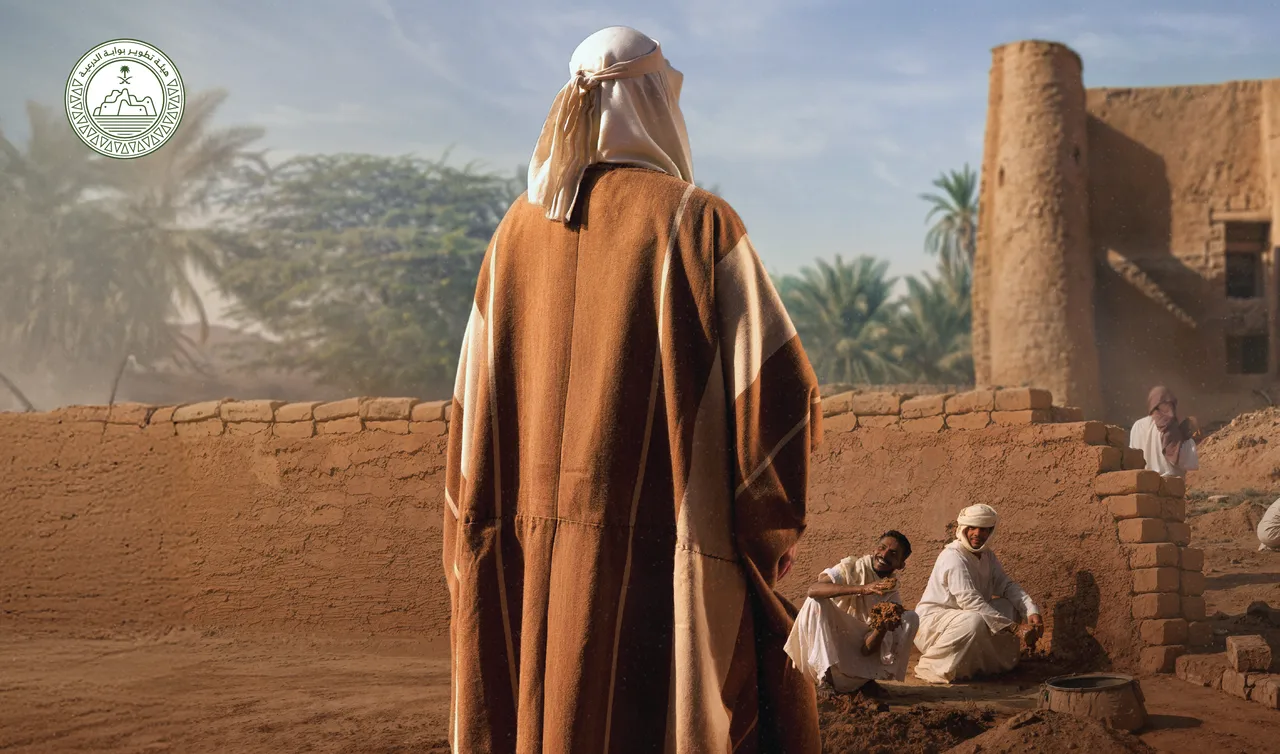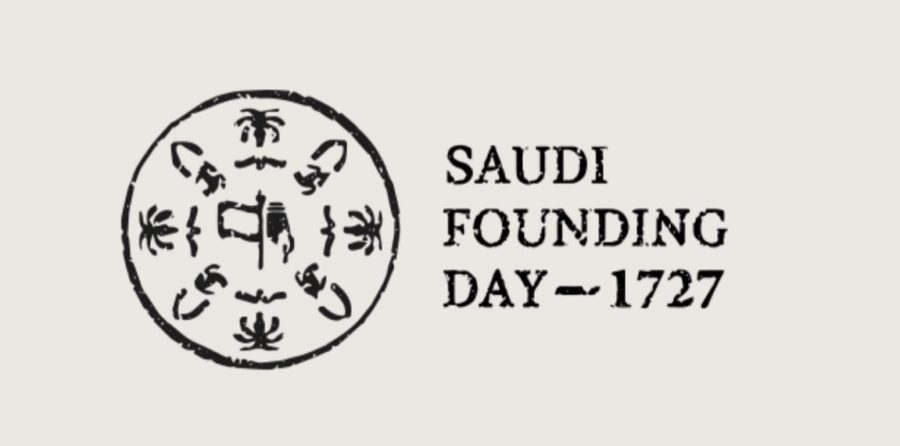First observed in 2022, Saudi Founding Day is celebrated every February 22nd in honor of Imam Muhammad ibn Saud becoming the emir of Diriyah in 1727.
Saudi Founding Day is notable for a number of reasons. To begin with, it is one of only three non-religious national holidays observed in the kingdom. The others being Saudi National Day and Saudi Flag Day. Saudi Flag Day is celebrated annually on March 11 and was first observed in 2023 to honor the day in 1937 when King Abdulaziz ibn Saud approved the current design of the Saudi flag and to celebrate the country’s faith, history and unity.
Saudi Founding Day was first celebrated in 2022 following a royal decree by King Salman bin Abdulaziz to commemorate the beginning of the reign of Imam Mohammed ibn Saud in February 1727 (1139 AH) in the oasis town of Diriyah and is now officially recognized as the start of the first Saudi state.
The logo features a man carrying a banner surrounded by four symbols. The first is the symbol of dates, which signifies life, growth, and generosity. The second is a symbol of a majlis council, which signifies unity as well as social and cultural harmony. The third, an Arabian horse, is a symbol of the chivalry and bravery shown by the state’s princes and heroes. The last symbol is for a market, which signifies economic activity, openness, and diversity.
Saudi Founding Day is different from Saudi National Day celebrated on September 23 which commemorates King Abdulaziz ibn Saud officially unifying the Kingdom of Saudi Arabia in 1932. It honors his efforts, begun in 1902, to recapture Riyadh and other regions to restore the Saudi state: first established in 1727 by Imam Muhammed ibn Saud.
Founding Day recasts Saudi history to focus on and prioritize the ascension of Imam Muhammed ibn Saud prior to his political alliance with Muhammad ibn Abd al-Wahhab in 1744. A significant distinction that links the current Saudi state – under Al-Saud leadership – with the First Saudi State.
The Saudi Founding site shares the official purpose of the day:
“Our beginning was not recent. It goes back to the pre-Islamic era, when the Banu Hanifa tribe arrived in Al-Yamamah at the beginning of the fifth century. They settled in the center of the Arabian Peninsula, where they founded Al- Yamamah, which was based in Al-Aridh region on the banks of Wadi Hanifah in Najd and later became a part of the Prophet’s State after the advent of Islam.
This lasted until the middle of the 9th Hijri century, specifically 1446AH/850 CE, when Prince Mani’ ibn Rabi’a al-Muraydi returned to Central Arabia to follow in the footsteps of his ancestors, “Banu Hanifa.” The prince’s arrival represented the first step to laying the foundation of the first Saudi State when he established the Second town of Diriyah (which merged the neighborhoods of Ghasyba and Al-Mulaybeed) as a city capable of expansion and full of security and stability. It differs from Ad-Diriyah where they had settled, located near Al-Qatif in the Arabian Peninsula’s east.
After more than 280 years of successive rule of the Emirate of Diriyah by Mani’ al-Muraydi’s sons and grandsons, the region was prepared for a new era when Imam Muhammad bin Saud became the ruler of Diriyah in the middle of 1139 AH (February 1727CE). Imam Muhammad transformed Diriyah from a state of weakness and division to unity and political independence, establishing the First Saudi State, with Diriyah as its capital.
Imam Muhammad bin Saud bin Muhammad bin Muqrin was born and raised in Diriyah in 1679 CE (1090 AH). He witnessed and participated in the events of his father’s and grandfather’s reigns over Ad Diriyah Emirate, which provided him with governing experience and knowledge of the region’s conditions. He achieved his ambition to rule a stable and prosperous state due to his vision and determination.
When Imam Muhammad bin Saud became the ruler of the First Saudi State, he endeavored to bring unity to the region by ensuring peace and within Diriyah and the surrounding towns and tribes and protecting trade and pilgrimage routes. He also regulated and expanded the State’s economic affairs and fortified the walls of Diriyah. Following that, the State set out to unify the regions of Najd during the initial phase of the First Saudi State’s unification, which was completed during the reigns of his sons and grandsons.”
To read more, click here, here, here, here, here and here.










